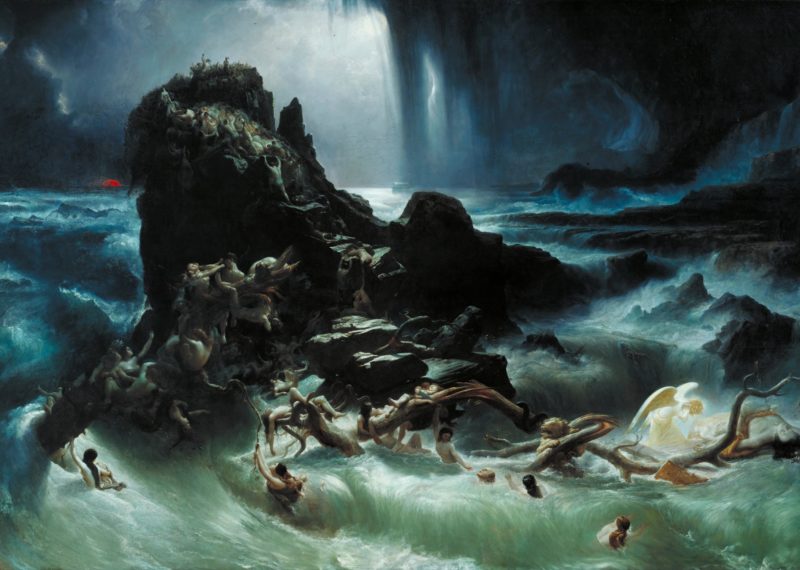The last year or so has seen a spate of landmark climate change reports that lay out an apocalyptic vision of the future, a vision that is already starting to take shape as rising temperatures fuel hellish wildfires in Australia, punishing floods in the Midwest, and ferocious hurricanes along the Gulf Coast.
But it’s not just the grim forecasts of scientists that are coming to pass. It’s also apocalyptic myths from around the world, as increasingly perilous fires and floods echo prophesies from religion and folklore. As Al Gore put it, “Every night on the network news is like a nature hike through the Book of Revelations.”
This trend could pose a challenge to tackling the carbon crisis. Experts say that if people come to believe climate chaos portends the literal end of days, they might give up on doing what’s needed to avoid a cataclysm, making their apocalyptic predictions self-fulfilling.
Some apocalyptic myths are becoming a reality thanks to climate change.
Decades of carbon pollution have yielded frightening changes to the Earth’s weather systems, including some seemingly drawn straight from myth. Columbia University anthropologist Ben Orlove said that in Phinaya, an indigenous community in the Peruvian Andes, people believe that when nearby glaciers begin to disappear it will herald the end of the world. There will be no more water, and a powerful wind will come and blow everything away.
As it turns out, that is already happening, thanks to climate change. Glaciers, which feed rivers and streams, are shrinking, portending to a shortage of fresh water. All that’s left is for a stiff breeze to finish it off.
In the Hindu tradition, for instance, the end of days begins with a century-long drought, as described in Parallel Myths by J.F. Bierlein, the source for many of the stories recounted here. People believe their lakes and rivers will dry up, and the earth will erupt in flames. This will be followed by rain and floods.
This year India suffered from widespread drought linked to climate change. Water levels in reservoirs dipped, and the arid weather set the stage for wildfires. The dry spell was followed by a period of intense rainfall and flooding, also blamed on rising temperatures.
Consider stories from the Norsemen, who said the world would end with a brutal winter — paradoxically, another consequence of climate change, as changes in the jet stream deliver especially cold weather to northern Europe. Or look at the Aztecs, who believed the world had already ended several times by fire, flood and hurricane. In recent years, Mexico has coped with wildfires, coastal flooding and supercharged hurricanes all linked to climate change.
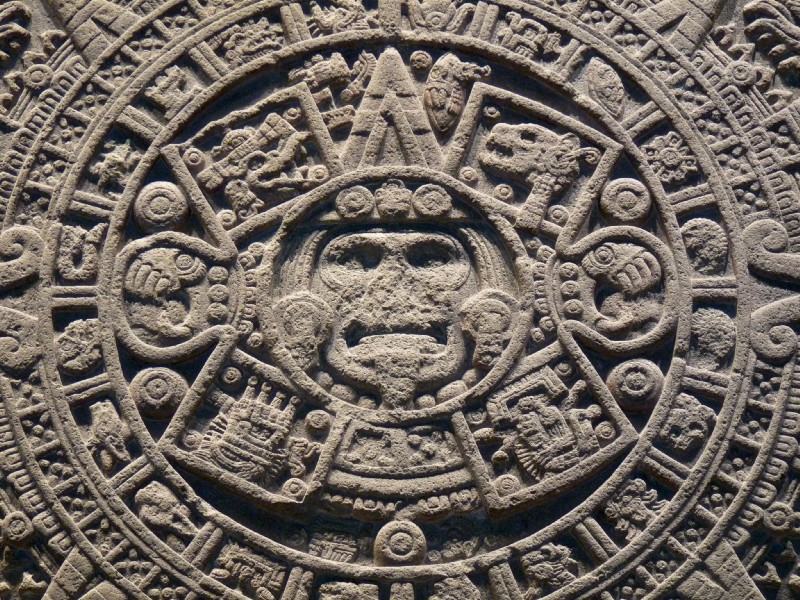
Perhaps the most common form of climate myth is the flood myth, itself a kind of end-of-the-world story. In it, the gods flood the earth to punish humanity for its sins, and they choose a handful of survivors to repopulate the earth after the flood. This cycle of wrongdoing, punishment and rebirth is a common feature of apocalyptic narratives.
In the Bible, Noah is told to build an ark. In Babylonian folklore it is Utnapishtim who is made to erect a ship. In Hawaii, it is the chief Nu’u who erects a boat. The Knisteneaux of the Great Plains believed it is a maiden named K-wao-tah-k who is carried to safety by a large bird. The list goes on.
“The presence of floods is widespread in mythic traditions,” said John Grim, a historian of religion at Yale University. Because humans have tended to settle near rivers, lakes and oceans, he said, numerous culture have adopted flood myths.
Such stories are evocative in our age of rising seas. In the worst-case climate scenario, seas are projected to rise by upwards of 6 feet. By 2050, as many as 300 million people around the globe could be facing chronic flooding as a result of climate change. Surging tides will sweep away homes, stealing lives and pushing survivors further inland. It is the great flood all over again, but without the promise of a better world at the end.
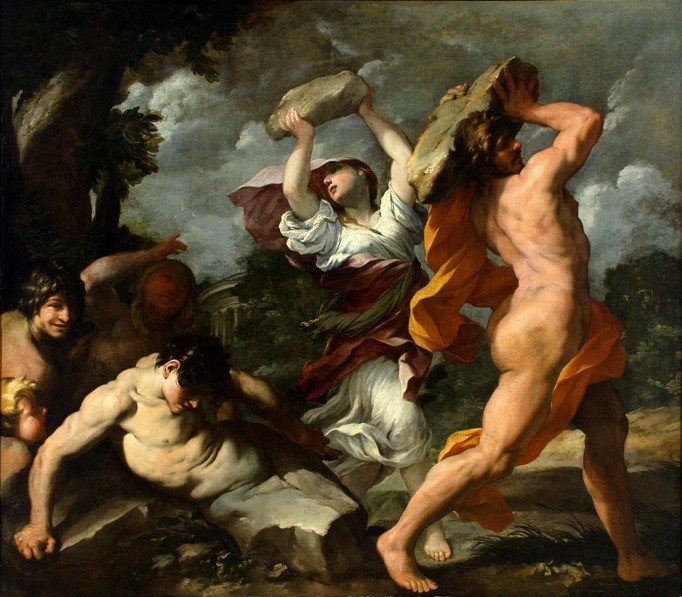
The function of apocalyptic myths
Like stories about the afterlife, stories about the end of the world can relieve fears of the unknown. Likewise, to believe that a storm or flood or other disaster was the work of the gods can help give meaning to an otherwise unfathomable tragedy, and allow people the opportunity to plead for relief.
During the Little Ice Age, a period of cold temperatures in from the 1400s to 1800s, many Europeans believed frigid weather was God’s will, said Adrienne Mayor, a historian and folklorist at Stanford. She said that when Alpine glaciers were expanding across farms and towns, villagers placed crosses and lit candles at the edges of advancing glaciers, hoping to persuade God to intervene.
Such is the nature of climate in myth. When the gods are pleased, the sun beams down. And when they are perturbed, lightning cracks. And when they are angry, they exact vengeance with fire and flood. This is how the world ends — not with a bang, but with the weather.
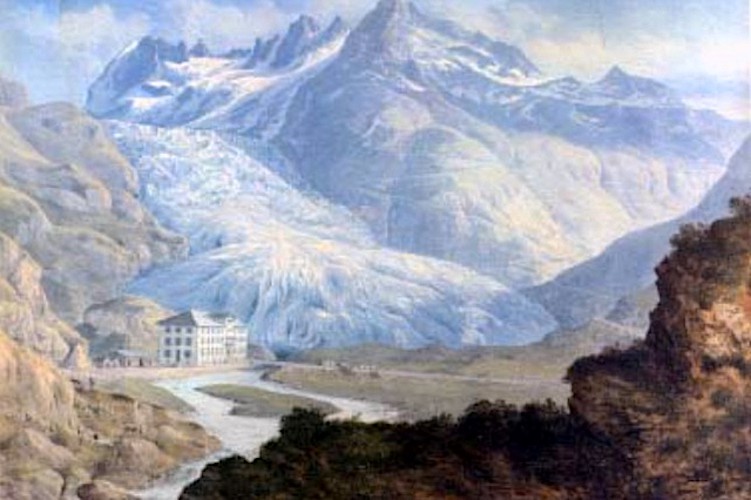
“For a lot of cultures the connection to the Earth is so important that the destruction of the Earth is basically the same as the world coming to an end,” said Javier Picayo, a lecturer in religion at the City University of New York.
However, end-of-the-world stories often mark a new beginning. In the Hindu tradition, the Earth is destroyed and remade every 4,320,000 years. In the Norse tradition, Ragnarok concludes with the last remaining god, Alfadur creating the world anew. The Book of Revelations ends with a new heaven on Earth.
“What many myths do — certainly the ones that I know — is predict an end that is, as ironic as this might sound, a return to the beginning,” said Robert Segal, a professor of religious studies at the University of Aberdeen. “The end of the world is commonly said to be a return to the beginning. So a return to the equivalent of the Garden to Eden.”
This is a hopeful feature of apocalyptic narratives, but to the extent that people believe the gods will redeem us in the end, it is also a dangerous one.
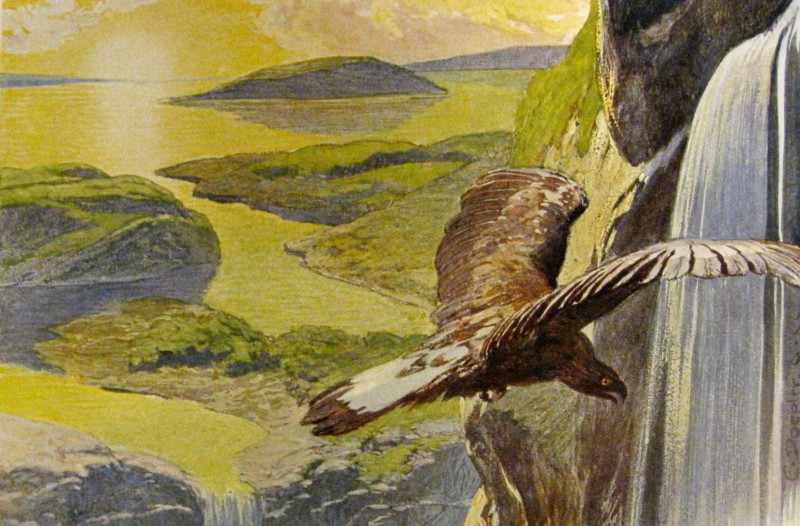
The perils of believing the prophecies
While many people regard such stories as parables, there are those who see them as history or prophecy. Around one in seven Americans think rising temperatures signal the end times, including roughly one in four evangelical Christians. A similar proportion believes that because the armageddon is nigh, we don’t need to worry about rising temperatures.
Other research has corroborated this finding, showing that those who interpret the Bible literally, specifically the passages on the end times, are less likely to worry about the environment. When asked his views on preserving America’s natural resources, former secretary of the interior James G. Watt famously replied, “I do not know how many future generations we can count on before the Lord returns.”
Complicating matters further, studies find that people who live through natural disasters often turn to religion as a coping mechanism. It’s conceivable that as climate change worsens, more people will come to embrace apocalyptic stories from religion. Some may come to see climate change as punishment for humankind’s wrongdoing.
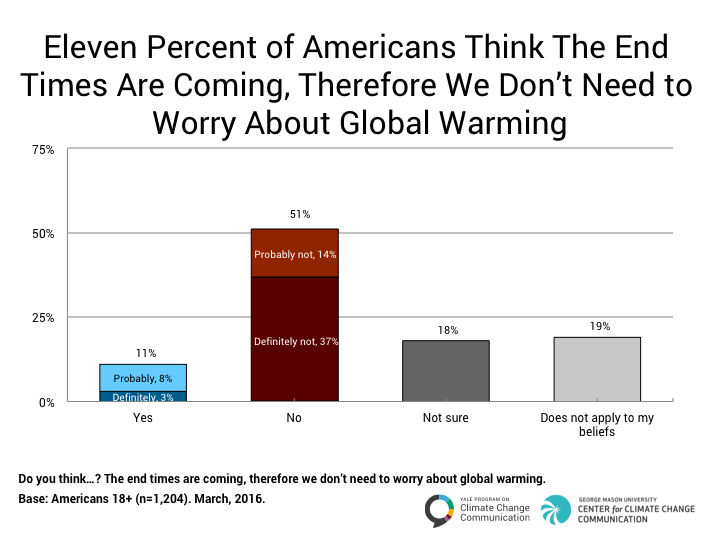
“We haven’t asked people about this in our surveys, but I suspect some people do see global warming as a punishment for humanity’s wrongdoing,” said Ed Maibach, director of the George Mason University Center for Climate Change Communication. “Some of these folks may see it as God’s punishment for our sins against one another. Others may see is as Mother Earth’s punishment for our sins against our planet. If these two views do exist, I suspect they exist in very different types of people — conservatives in the first case, and liberals in the second.”
Even the liberal, secular view Maibach describes, while rooted in fact, could prove problematic. In a paper on the 2004 film, The Day After Tomorrow scholars warned that, by depicting a world already ravaged by climate change, and thus beyond saving, it offered “a version of the apocalypse that ultimately enfeebles environmental advocacy,” and threatened to inspire fatalism.
There is a way, however, that end-of-world stories, can inspire people to consider climate change. In his 2015 encyclical on climate change, for instance, Pope Francis invoked the end of days to argue for the preservation of the earth, urging followers to protect God’s creation until Jesus’s return. Picayo offered his insight into the text.
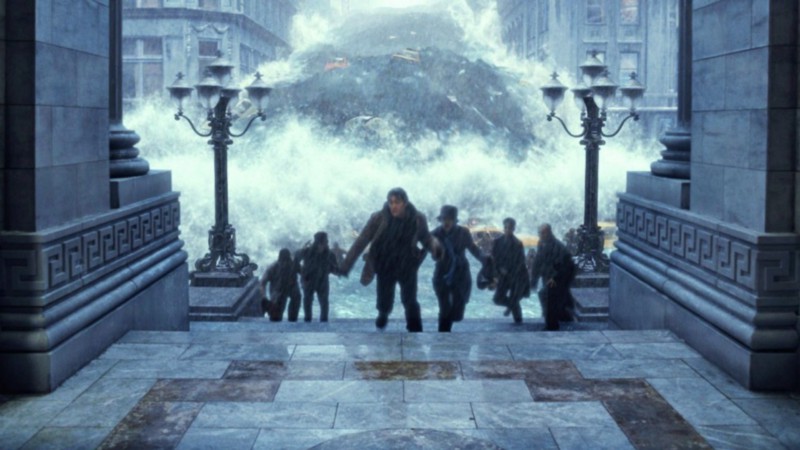
“The revelation says that the new Jerusalem, the kingdom of heaven, comes down to Earth, and I think we have to consider, well, if we’re destroying it, what is this kingdom of heaven going to be?” he said. This line of thinking could be an antidote to fatalism in the face of climate chaos.
“Imagine this scenario: Trusted voices in society begin to tell stories about the growing possibility of a climate apocalypse — not as an act of God, but rather an act of human failure — which rallies people in large numbers to overcome their apathy and get involved in putting pressure on our politicians to take the necessary measures,” Maibach said. “Several years ago I would have said this was an unlikely scenario, but then David Wallace-Wells started writing about climate change in apocalyptic terms, and large numbers of people sought out his writing. Has it moved them to political action? Unknown, but entirely possible.”
Picayo concurred, saying, “When it comes to end-of-the world myths, I think that it’s not so much about the future, but about the present, and perhaps a reminder for all of us to consider how we’re living today.”
Jeremy Deaton writes for Nexus Media, a nonprofit climate change news service. You can follow him @deaton_jeremy.

